Citrus ryukyuensis is a new species in the citrus family. It was only properly identified and described in 2021 by an academic team around Dr. Wu, who was researching the biodiversity and origins of East Asian citrus in the Ryukyu Islands. The wild-growing tree was known in Okinawa as ‘Tanibuta’, meaning large seeds in the local dialect. It was first described by Professor Tanaka (1957) as a Ryukyuan variant of Tachibana, Citrus tachibana var attenuata. Even he was puzzled by the fact that Tanibuta produces monoembryonic seeds, whereas Tachibana produces polyembryonic (apomictic) seeds. Also, the differences in leaf shape and also the peculiarity that Tanibuta produces acid-free fruits made him remark that these differences should lead to further investigation. However, this did not happen until 2021, and other authors adopted Tanaka’s original designation. Thus, even for of Dr. Wu’s team, the discovery of a new species based on an assessment of plastid DNA was a surprise.
Citrus ryukyuensis is distinctly different from Citrus reticulata (i.e. mainland mandarin) and Citrus maxima (pumelo). Based on sequence comparisons, Wu estimates that Citrus ryukyuensis diverged from mainland Asian mandarins ~2.2-2.8 million years ago. This separation time is comparable to the separation between other recognized citrus species, such as Poncirus trifoliata and Poncirus polyandra. The period roughly corresponds to the Pleistocene sea-level rise that cut off the Japanese islands, while the mainland species underwent genetic mutation that eventually spread throughout the mainland species, allowing them to reproduce asexually and apomictically (without fertilization).
The tree is a small, wildly growing, showy mandarin, the flower measures 1.5 cm in diameter. The fruit is full of large seeds, slightly flattened, sunken, with a thin and adherent skin, 6-8 segments and a diameter of 2,5 -4 cm. The flesh is very light in colour, slightly sweet and completely acid-free. At full maturity, the acidity is 0,24 % (Inafuku-Teramoto et al. 2010). The seeds are monoebryonic.
Leaves are very thick, the largest measuring 7,2 x 3,7 cm, petiole 0,9 cm long. The leaf is obovate, the base strongly attenuating into a wingless petiole.
The trees grow wild on mountain tops in exposed places where they get plenty of light. They can still be found north of Ōgimi village and in the Yanbaru forest.
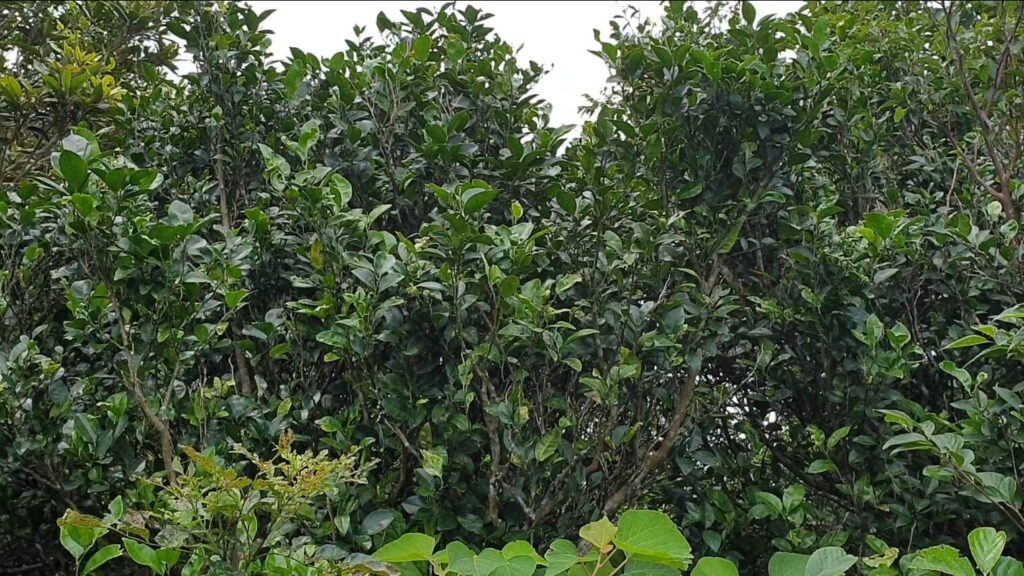
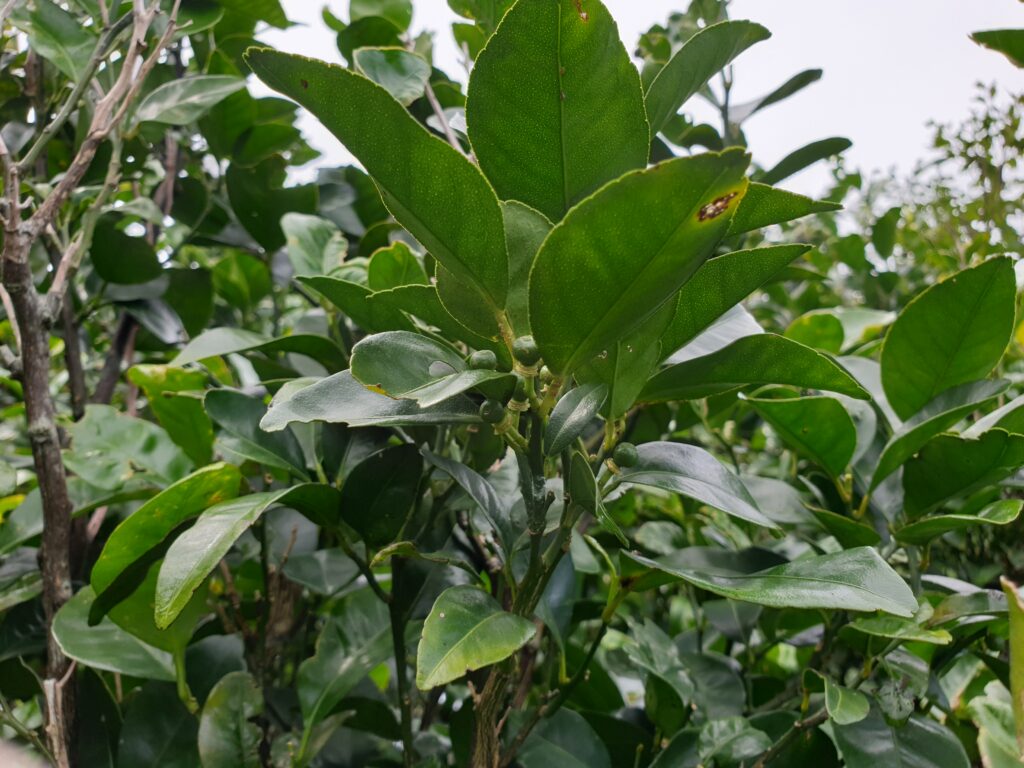
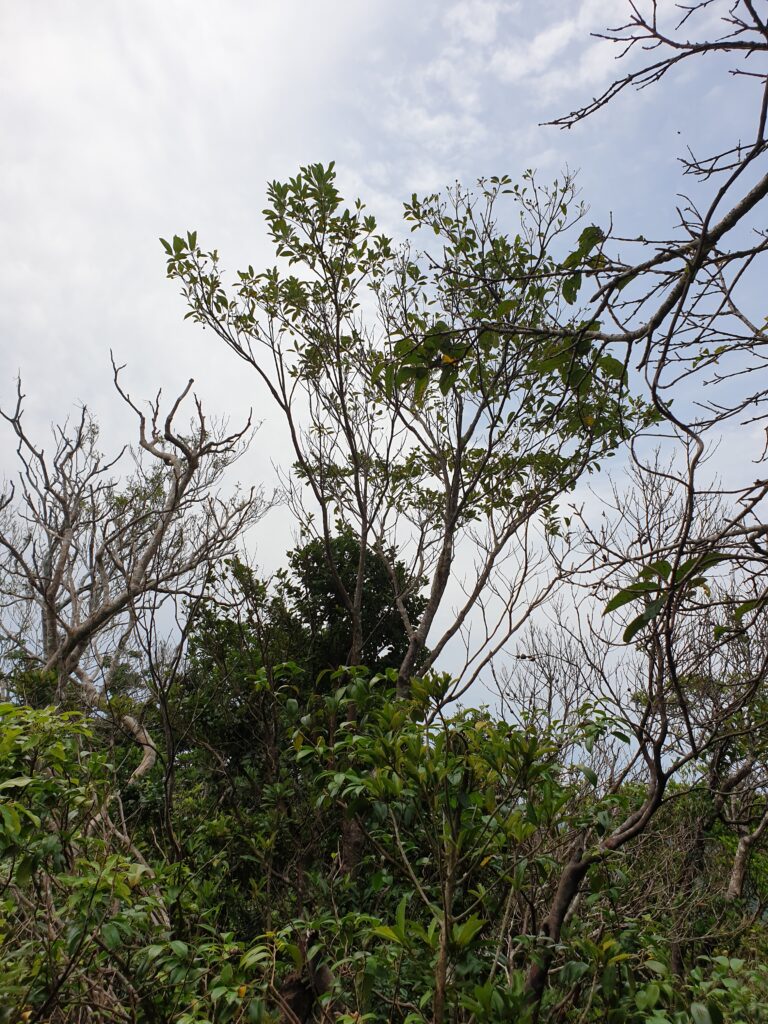
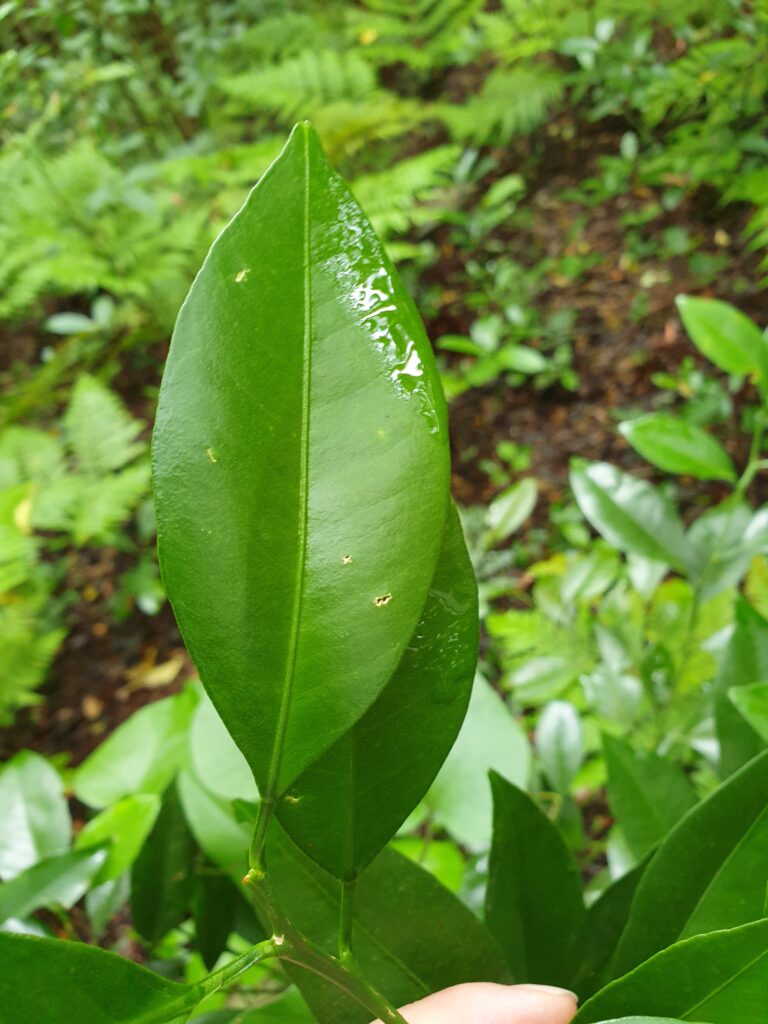
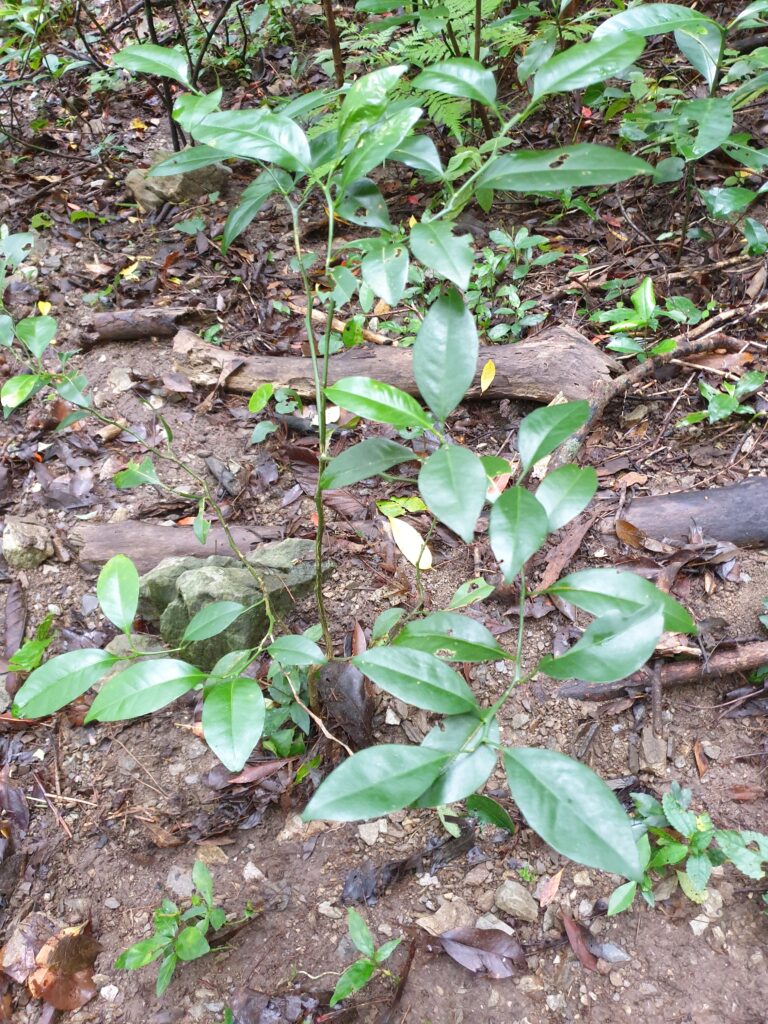
Nekumachiji
